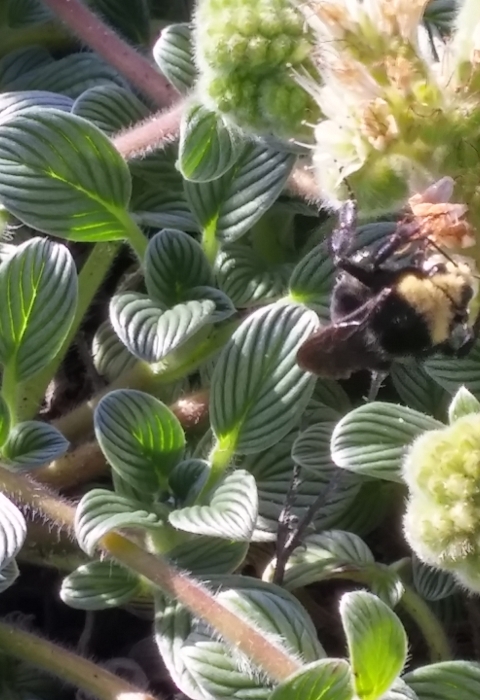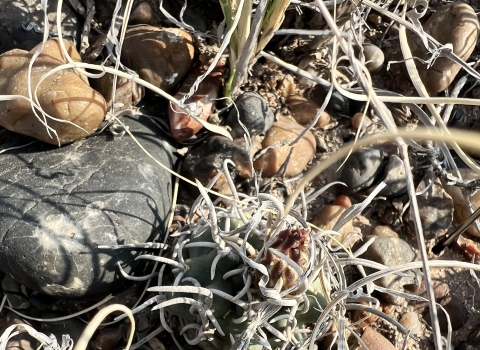After reviewing the best available scientific information, the U.S. Fish and Wildlife Service is proposing to list sand dune phacelia (Phacelia argentea) as threatened under the Endangered Species Act (ESA). The Service is also proposing critical habitat and a 4(d) rule to tailor the protection of the species to actions compatible with its recovery. This announcement opens a 60-day public comment period.
Sand dune phacelia, also known as silvery phacelia, is a flowering perennial in the forget-me-not family. This evergreen plant is endemic to southern Oregon and northern California, occurring along 100 miles of coastline from Bandon, Oregon south to Crescent City, California.
The most recent survey revealed only 25 naturally occurring populations of sand dune phacelia, most of which were in poor habitat. The most significant threat to remaining populations is habitat loss due to the encroachment of invasive species invasive species
An invasive species is any plant or animal that has spread or been introduced into a new area where they are, or could, cause harm to the environment, economy, or human, animal, or plant health. Their unwelcome presence can destroy ecosystems and cost millions of dollars.
Learn more about invasive species like European beachgrass and gorse. Climate change is also expected to cause sea level rise and exacerbate the spread of invasive species, which would result in additional habitat loss for the sand dune phacelia.
“Nearly seventy percent of the remaining sand dune phacelia populations are in poor condition, and most known locations are on non-federal lands,” said Robyn Thorson, Regional Director for the Service’s Columbia-Pacific Northwest Region. “Although this coastal plant is in dire need of help, we are optimistic that we will see its recovery by working closely with our partners in conservation.”
Sand dune phacelia requires early successional sand dune habitat that provides sufficient space and light for seedlings to establish and grow. Consequently, this plant is management-dependent, relying on active and continuous removal of invasive species. Conservation measures to preserve or enhance sand dune phacelia populations are currently underway at several sites in Oregon and California on private, state and federal lands. These actions include habitat restoration through removal of invasive species, population augmentation and population reintroduction.
We are proposing to designate 13 units of occupied critical habitat consisting of 252 total acres distributed across the range of the species. We are also proposing a 4(d) rule that would provide for the conservation of the sand dune phacelia by prohibiting the removal, cutting, digging up, damaging, or destroying the species on non-federal lands in knowing violation of any state law or regulation.
The 60-day comment period allows the public to review and provide input on this proposal. The Service is seeking information about the biology, distribution, status and population trends of the species, as well as any additional information regarding the proposed critical habitat designation and 4(d) rule. All relevant materials received by May 23, 2022, will be considered.
Information on how to submit comments is available at www.regulations.gov. The docket number is FWS–R1–ES–2021–0070 and can be located HERE. Frequently asked questions about this proposal can be found HERE.
The U.S. Fish and Wildlife Service works with others to conserve, protect, and enhance fish, wildlife, plants and their habitats for the continuing benefit of the American people. For more information about our work and the people who make it happen, visit https://www.fws.govor connect with us via Facebook, Twitter, YouTube and Flickr.



